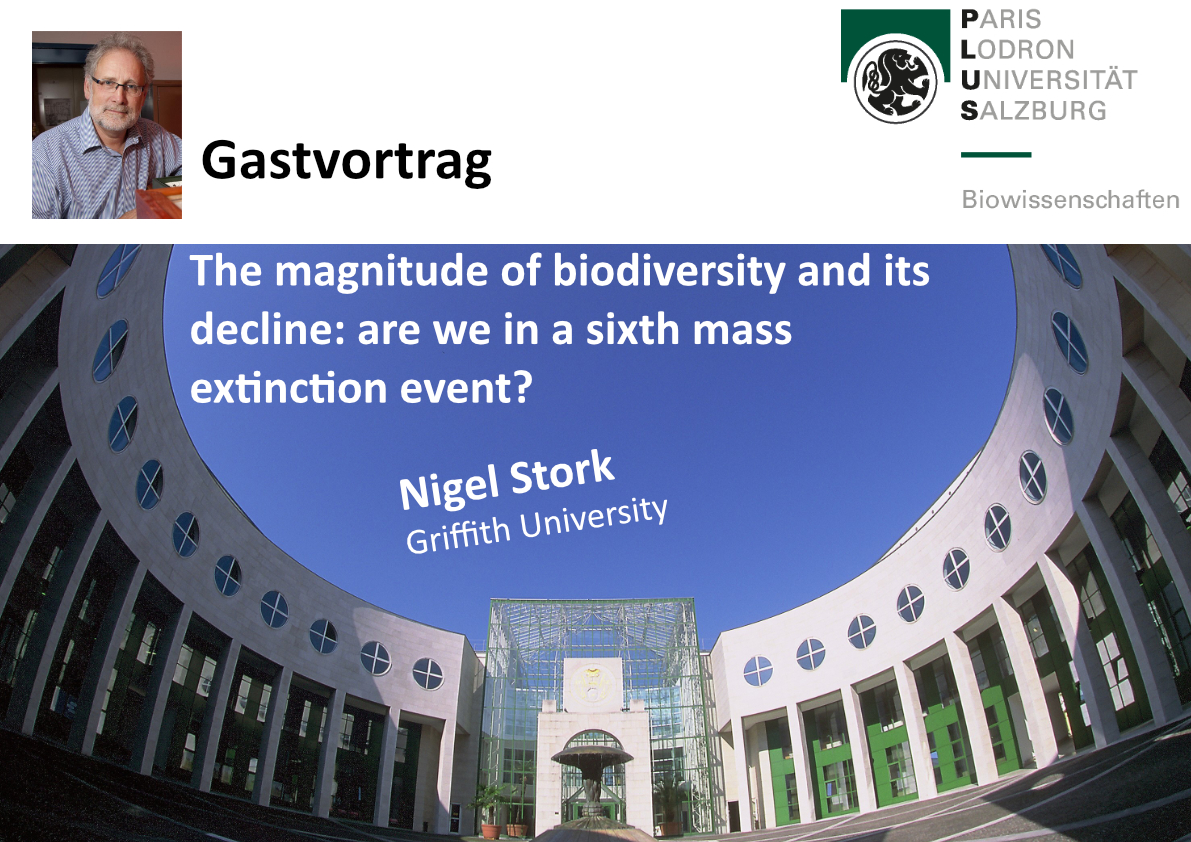19.03.: Gastvortrag: The magnitude of biodiversity and its decline: are we in a sixth mass extinction event?

Prof. Nigel Stork ist Professor am Environmental Futures Research Institute an der Griffith University, Australien.
Abstract: The key drivers for the ‘biodiversity crisis’ in the 1980s were dramatic increases in estimates of the possible numbers of species of eukaryotes on Earth, the previously ignored increasing loss of tropical forests, and massive increases in estimated extinction rates. Some suggested there could be 30 million or even 100 million species on Earth and that we were losing species at more than 10% per decade. Much of the debate on just how many species there might be focuses on the number of insects and other invertebrates. In the last decade, new methods of estimating global species richness have been developed and existing ones improved through the use of more appropriate statistical tools and new data. Taking the mean of most of these new estimates indicates that globally there are approximately 1.5 million, 5.5 million, and 7 million species of beetles, insects, and terrestrial arthropods, respectively. Previous estimates of 30 million species or more now seem extremely unlikely. With 1 million insect species named, this suggests that 80% remain to be discovered. DNA tools have revealed many new species in taxonomically intractable groups, but unbiased studies of previously well-studied insect faunas indicate that 1-2% of species may be truly cryptic. A number of authors have suggested we are at the beginning or even the middle of a sixth mass extinction event. I examine whether this likely to be the case.
Webex-Details:
Meeting number (access code): 121 005 2555
Meeting password: pJj2Ptsbh33





